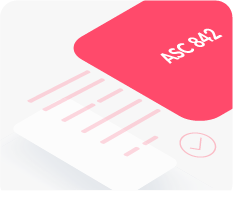Confessions of a spreadsheet martyr
By
Mike Lees
My name is Mike, and I am a spreadsheet martyr.
You probably weren’t expecting an EZLease blog to be written by the marketing guy, right? Well, although I am not (by a long shot) a lease accounting expert, I am at least not completely out of my depth here. Not a lot of people know this, but I am actually a fully qualified accountant. I qualified as a Chartered Certified Accounting (ACCA) in the UK with KPMG, back in 19….. Well, let’s just say that it was a little too close for comfort to the decade that spreadsheets were invented! I even practiced for a while as an auditor. But before you start to worry too much, I am not here to flex or impart any accounting knowledge or advice.
What I am here to stand-up and publicly admit is that I am a spreadsheet-oholic and more than that, I am the worst culprit. I wear my hard-earned badge with pride:
I am a ‘spreadsheet martyr’.I confidently pull out my multi-tab, color-coded, formula-heavy spreadsheet, with its highlighted fields for inputs and assumptions and beautifully formatted summary results and charts, while proudly reminding you how late into the night I worked, building all of the amazing complexity.
Spreadsheet love
Spreadsheets have been a pillar of my career from my time as an accountant, to building stock-price analysis models as an investment analyst, to starting my own company and building financial models for VCs, to the reverse waterfall models that underpin my current role as a data-driven CMO. Trust me, I have built some late-night masterpieces (and based on what I outline in this blog, I’ve probably wasted quite a bit of time).
But clearly, I love spreadsheets; I love that they are easy-to-use and don’t require me to spend any money for each new application. I love that I can easily create a complex thing of beauty. For all of these reasons, spreadsheets lure you in with a false sense of security – cheap, easy and powerful makes them a go-to for most people’s complex modeling/calculation needs, especially when a fit-for-purpose app might not exist (hint: there IS an app for lease accounting… but I think you guessed as much!).
Unfortunately, because of this, spreadsheets have moved from productivity tools for internal projects into the much more dangerous territory of mission-critical applications that they were never designed to be. And, while they may be necessary when a suitable app is not available, they are a false economy when there is a fit-for-purpose solution – especially for a mission-critical application that will be used on an ongoing basis, by multiple people. And, while spreadsheets may seem cheap, the real cost and risk of using them is indirect and is often discovered far too late.
Let me elaborate…
- Spreadsheets are dumb! They have more in common with a development language than an application because you, as the developer have to provide the knowledge. So, cost number one is the cost of you obtaining and maintaining that knowledge and finding the right ways to encode it in a spreadsheet.
- Spreadsheets are brittle. Once you’ve hard-coded all that logic into the cells of your spreadsheet, it becomes hard to maintain. When you have lots of interdependent, nested logic, small changes in one place can have catastrophic, cascading effects elsewhere. This is especially true when you use them for things you don’t do every day (hint: lease accounting and compliance). Worse, if you leave the spreadsheet alone for a while and come back to it later, you might even forget how it works! So, you need to factor in the cost of re-learning your spreadsheet over time and recoding its logic.
- Spreadsheets are a personal productivity tool. They are an awful tool for collaboration. The code that you develop is your own understanding and interpretation of the problem, and the complexity is often hard for others to pick-up and follow. So, you have to factor in the cost of training others on what you built and retraining them when you change it.
- No guarantees! If your spreadsheet to calculate your ASC 842 entries is wrong, who is to blame? …not Microsoft! But, if you use an app that’s built for ASC 842 compliance, you enter the correct data and the outcome is wrong, then the provider is liable. There’s comfort in that.
But beyond these costs and risks, there are other reasons, specific to the lease accounting standards that make spreadsheets unfit for purpose:
- No data integrity. You can literally put any data you want into your spreadsheet… there is no governance over the integrity or formatting of the data you input or generate.
- Not a system-of-record. Compliance with the global lease accounting standards requires a system-of-record, i.e., a robust, authoritative, single source of data to manage assets and the respective reporting. A spreadsheet simply doesn’t fit the bill.
- No built-in controls. The lease accounting standards require reporting that is a fair reflection of the business — transparent, and with proper levels of management controls. A spreadsheet was never designed for this requirement and level of sophistication.
- No audit trail. Leases are highly dynamic and managed by many people, including many that are not in the accounting department. A complete and accurate audit trail is a fundamental requirement to achieving compliance. Spreadsheets don’t deliver.
In a nutshell, spreadsheets are the wrong tool to do anything that involves a) more than one person, b) data that changes over time, c) multiple stakeholders, and, most importantly, d) complex projects where the output has legal or compliance consequences.
You might be thinking that all of this is just a trade-off. You might be saying to yourself “my budgets are tight, the costs and risks of using spreadsheets might be a price worth paying if the cost of an alternative fit-for-purpose solution is much higher. And after all, none of this applies to me because I am a ‘spreadsheet ninja’”! But, I am here to tell you that that simply isn’t the case – in fact, I can almost guarantee it.
The simple fact is that apps like EZLease are not expensive. Think of EZLease as the “Turbotax of lease accounting.” Sure, I could learn all of the tax rules and calculate my taxes using a spreadsheet and then update it every year when the rules changed and add bits when my situation changes. Or, I could pay a relatively small subscription, input the basic data (even automate the input of much of the data), answer some simple questions and have a software solution that has all of the up-to-date tax logic built-in, do it all for me….and guarantee the result!
So, if you are tempted to be an ASC 842 ‘spreadsheet martyr’, I urge you to ask yourself a few very simple questions:
- Do I want or need to know the intricate complexities of ASC 842 (or IFRS 16 or GASB 87) and am I prepared to stay on top of the detail and constantly recode my spreadsheet whenever the regulations change?
- Is my time (and that of my team) worth $200 an hour (or more)?
- Will I spend more than 40-50 hours creating, populating, checking and editing an ASC 842 spreadsheet?
- Who do I blame when my spreadsheet gives me the wrong answer?
If the answer to these are “No”, “Yes”, “Yes” and “not me”, then you’ve taken the first step to curing yourself of spreadsheet martyrdom…and we’d love to help! Download our Quick start guide to get started.



